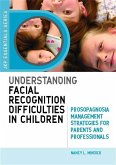This reference work provides broad and up-to-date coverage of the major perspectives - ethological, neurobehavioral, developmental, dynamic systems, componential - on facial expression. It reviews Darwin's legacy in the theories of Izard and Tomkins and in Fridlund's recently proposed Behavioral Ecology theory. It explores continuing controversies on universality and innateness. It also updates the research guidelines of Ekman, Friesen and Ellsworth. This book anticipates emerging research questions: what is the role of culture in children's understanding of faces? In what precise ways do faces depend on the immediate context? What is the ecology of facial expression: when do different expressions occur and in what frequency? The Psychology of Facial Expressions is aimed at students, researchers and educators in psychology anthropology, and sociology who are interested in the emotive and communicative uses of facial expression.
Table of contents:
Part I. Introduction: 1. What does a facial expression mean? James A. Russell and José-Miguel Fernández-Dols; 2. Methods for the study of facial behavior Hugh Wagner; Part II. Three Broad Theoretical Frameworks: 3. Emotions and facial expressions: a perspective from differential emotions theory Carroll E. Izard; 4. Facial expressons as modes of action readiness Nico H. Frijda and Anna Tcherkassof; 5. The new ethology of human facial expressions Alan J. Fridlund; Part III. With a Biological and Developmental Focus: 6. Animal sounds and human faces: do they have anything in common? Peter Marler and Cristopher Evans; 7. Yawns, laughs, smiles, tickles and talking: naturalistic and laboratory studies of facial action and social communication Robert R. Provine; 8. A neurobehavioral approach to the recognition of facial expressions in infancy Charles A. Nelson and Michelle de Haan; 9. A dynamic systems approach to infant facial action Daniel S. Messinger, Alan Fogel and K. Laurie Dickson; Part IV. With a Psychological and Social Focus: 10. A componential approach to the meaning of facial expressions Craig A. Smith and Heather S. Scott; 11. Spontaneous facial behavior during intense emotional episodes: artistic truth and optical truth José-Miguel Fernández-Dols and Maria-Angeles Ruiz-Belda; 12. Is the meaning perceived in facial expression independent of its context José-Miguel Fernández-Dols and James M. Carroll; 13 Reading emotions from and into faces: resurrecting a dimensional-contextual approach James A. Russell; 14. Facing others: a social communicative perspective on facial displays Nicole Chovil; 15. Faces in dialogue Janet Beavin and Nicole Chovil; Part V. Integrative Summary: 16. Faces: an epilogue and reconceptualization G. P. Ginsburg.
This reference work provides broad and up-to-date coverage of the major perspectives - ethological, neurobehavioral, developmental, dynamic systems, componential - on facial expression. It summarizes, critiques current research and provides guidelines for future research.
It reviews current research and provides guidelines for future exploration of facial expression.
Table of contents:
Part I. Introduction: 1. What does a facial expression mean? James A. Russell and José-Miguel Fernández-Dols; 2. Methods for the study of facial behavior Hugh Wagner; Part II. Three Broad Theoretical Frameworks: 3. Emotions and facial expressions: a perspective from differential emotions theory Carroll E. Izard; 4. Facial expressons as modes of action readiness Nico H. Frijda and Anna Tcherkassof; 5. The new ethology of human facial expressions Alan J. Fridlund; Part III. With a Biological and Developmental Focus: 6. Animal sounds and human faces: do they have anything in common? Peter Marler and Cristopher Evans; 7. Yawns, laughs, smiles, tickles and talking: naturalistic and laboratory studies of facial action and social communication Robert R. Provine; 8. A neurobehavioral approach to the recognition of facial expressions in infancy Charles A. Nelson and Michelle de Haan; 9. A dynamic systems approach to infant facial action Daniel S. Messinger, Alan Fogel and K. Laurie Dickson; Part IV. With a Psychological and Social Focus: 10. A componential approach to the meaning of facial expressions Craig A. Smith and Heather S. Scott; 11. Spontaneous facial behavior during intense emotional episodes: artistic truth and optical truth José-Miguel Fernández-Dols and Maria-Angeles Ruiz-Belda; 12. Is the meaning perceived in facial expression independent of its context José-Miguel Fernández-Dols and James M. Carroll; 13 Reading emotions from and into faces: resurrecting a dimensional-contextual approach James A. Russell; 14. Facing others: a social communicative perspective on facial displays Nicole Chovil; 15. Faces in dialogue Janet Beavin and Nicole Chovil; Part V. Integrative Summary: 16. Faces: an epilogue and reconceptualization G. P. Ginsburg.
This reference work provides broad and up-to-date coverage of the major perspectives - ethological, neurobehavioral, developmental, dynamic systems, componential - on facial expression. It summarizes, critiques current research and provides guidelines for future research.
It reviews current research and provides guidelines for future exploration of facial expression.








